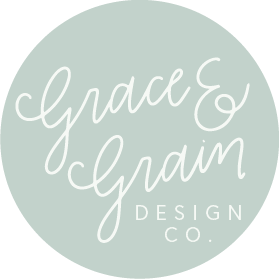By now you've probably heard me talk about my favorite new collection of products: Yarn Embroidery Kits!
I enjoy hand embroidery projects and my girls are always fascinated by them, asking for their own to work on. While I do let them practice on fabric occasionally, it can be difficult for them to juggle the many different variables that are involved with learning the skill. Keep the fabric taught, don't let the thread slip out of your needle, try to keep the stitches the same length, start the next stitch from the underside of the fabric instead of the top... It's a lot to learn!
When I saw a wood embroidery pattern, I thought, "what a perfect solution!" It allows them to get the hang of some of those aspects without having to learn them all at once. Here are a few ways it helps:
- create a loose knot around the eye of the needle to keep the yarn from slipping out while stitching
- holes cut into the wood creates a clear pattern with set stitch length
- a plastic needle can be used to avoid the sharp point of a traditional needle
- yarn is less prone to tangles than thread
Now that you see a few of the benefits to learning embroidery with this tool, let's go over the steps to get started and the stitches you'll find in my patterns.
Getting Started
- Begin by gathering your wood pattern, your blunt tipped needle (I provide plastic needles in the kits but you can also use a large blunt metal needle), yarn, and scissors.
- To thread the needle, pinch the end of the yarn and push the fibers through.
- I find it easiest to tie the yarn in a loose knot at the eye of the needle for the kids. Depending on your child's coordination, however, they may be able to hold the yarn to prevent it from unthreading without tying the knot.
- On your first stitch, tie the yarn loosely to the edge of the board. When the project is complete you can untie this and weave the end into the other stitching so it doesn't show. Again, this may be unnecessary depending on your child.
Straight Stitch & Back Stitch
While a straight stitch leaves a space between each stitch, a back stitch creates a gapless line.
- For a straight stitch, you'll come up from the back of the board and down through the following hole. Up through the next hole and repeat. This creates a cute, classic "stitch" pattern with spaces in between.
- For a back stitch, you'll do one straight stitch, then come up from the back in the following hole and down into the previous hole. The straight stitch anchors the yarn and the back stitches create a gapless line. For this reason, this stitch is most common in my patterns.
Cross Stitch
Cross stitch is used to fill an area of a design, like the cross in my Easter pattern. You can choose to outline the object with a back stitch as well to provide more definition, which I did there.
- Create a straight stitch in a diagonal. Come up through an adjacent hole and back to cross over the previous stitch and create an X.
- For a line of cross stitches, you can either cross back over individually, or do a whole line of the first diagonals and then cross back over the entire line.
Whip Stitch
Whip stitch is done on the edge of the board to create a fun detail.
- Working left to right, come up from the back of the board through the first hole.
- Come down and circle around the edge of the board.
- Come back up from the underside of the board through the following hole.
- Repeat.
These are the four main stitches you'll find in my patterns for now watch for more to be incorporated in the future! Let me know: which do your littles enjoy the most? Which is the most challenging?


